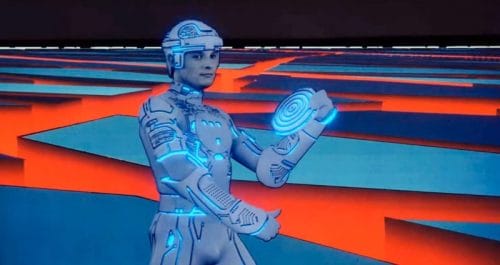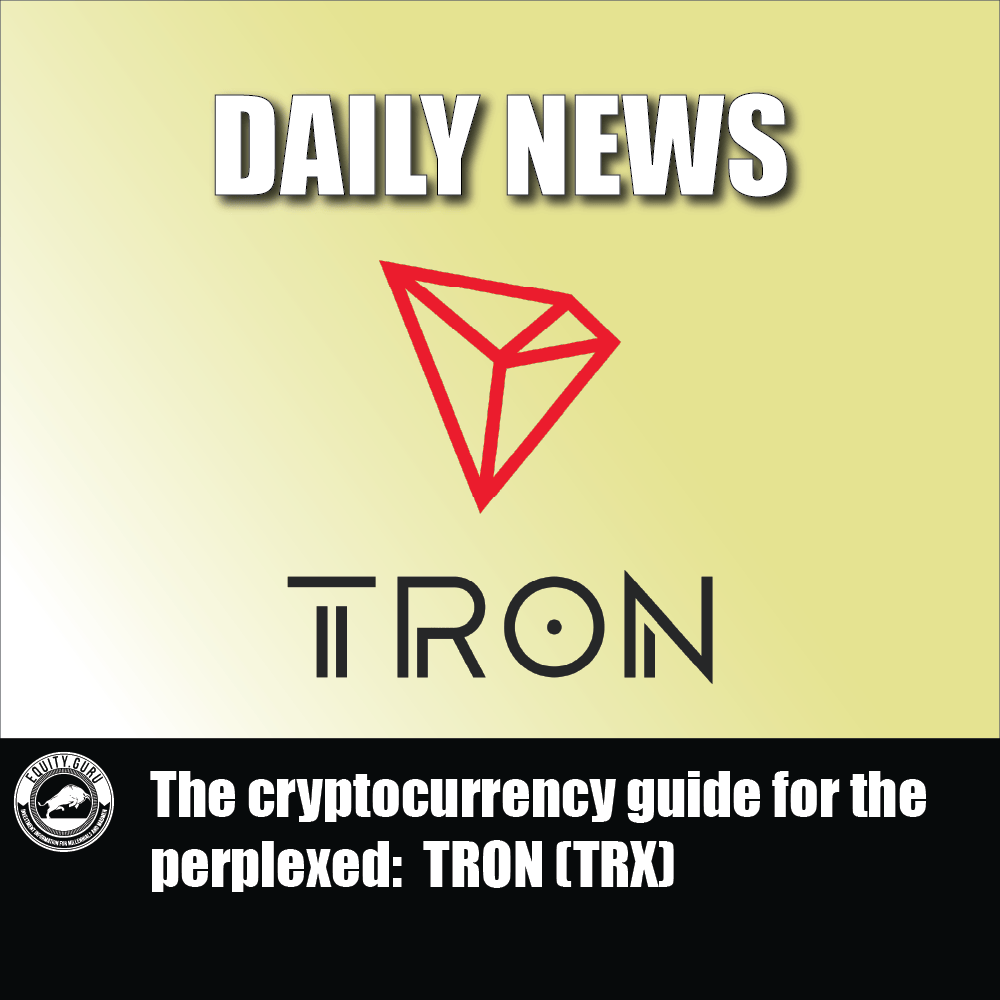I’m not sure a lot of under-40 folks today remember Tron. I’m a touch north of 40 and I barely remember it. It was a pre-Dude Jeff Bridges fronted movie about a virtual reality/metaverse like world, entered via your local arcade, where people threw disks around and everything looked like a scene out of 1980’s era virtual reality.
The game was literally inspired by Pong and had lukewarm reception at the box office, but has since gone on to become something of a cult classic and something of a staple in nerd culture. They brought it back and cast post-Dude Jeff Bridges to reprise his former roll sometime in the last decade and it didn’t do well. Probably no cult classic status here either.
And its status in nerd culture along with a healthy dose of name-brand recognition among the cognoscenti of blockchain and computer science are why developer Justin Sun decided to call his project Tron.

It’s output coin is called Tronix (TRX) and it’s a curious case among cryptocurrencies in that it’s one of the most successful ERC-20 coins to make the jump to its own blockchain.
First we need to cover something. You can make coins on Ethereum and many of the cryptos on the market are actually coins hosted on Ethereum’s blockchain. These are usually called ERC-20 coins, which is the standard for smart contract functionality, although there’s a whole host of ERC’s with numbers attached that perform different functions.
If you’re still confused—check out this YouTube clip:
Back to Tron.
TRON itself is a decentralized, open-source blockchain-based operating system that sports the ability to support smart contracts. It uses proof-of-stake as its consensus mechanism.
Originally established as an ERC-20 coin on top of Ethereum by Justin Sun in 2014, it has since 2017 been overseen and supervised by the Singapore-based TRON Foundation, and then made the switch to its own blockchain in 2018.
TRON has a three layer architecture—meaning a core base layer which runs the blockchain, accompanied by two other layers, one for storage and another for applications.
Maintained by the Tron Foundation, the protocol distributes computing resources among TRX holders with internal pricing mechanisms like bandwidth and energy. The network carries zero transaction fees and purports to operate at 2,000 transactions per second. It also provides a decentralized virtual machine (like Ethereum’s), which can run a program using an globally distributed network of public nodes.
Tron uses a mix of blockchain and peer-to-peer (P2P) network technology to give content creators a direct link to consumers. Software developers can use the Solidity programming language to create applications and host them on Tron’s platform. Network users use TRX to pay content creators to access their applications, but content creators don’t pay a transaction fee to Tron. TRX transactions are also free on the network.
Users can keep their TRX on many desktop, mobile or hardware wallets.
The history

2017 and 2018 were big years for TRON.
Justin Sun founded TRON in 2017 and established the TRON Foundation in July 2017. Originally, the foundation raised $70 million in 2017 through an initial coin offering. The testnet, Block Explorer and Web Wallet came next in 2018. The TRON mainnet launched in May of 2018 and by June, TRON had swapped out its status as an ERC-20 coin and its reliance on Ethereum to an independent peer-to-peer network.
In July of 2018, the TRON Foundation bought BitTorrent. Yes. The same Bittorrent you illegally download all those movies with and don’t tell anyone about. We won’t tell either.
Does Tron Have a Future?
If you shake the magic 8-ball and ask this question you come up with “All Signs Point to Yes.”
Especially since the latest news about what Justin Sun’s been doing involves putting out their own algorithmic stablecoin on top of the Tron blockchain.
According to the announcement, it’s going to be called USDD. The blog post where the announcement originated blabbed on about how stablecoins have evolved from the USDT 1.0 era to now include decentralized algorithmic stablecoins. The decentralized autonomous organization (DAO) behind Tron got together with other blockchain types to launch USDD.
It sounds like Sun’s taken up Terra’s mantle of burning coins to maintain a steady peg, which you can read about in the article on Terra we wrote last week. It will be backed by $10 billion in crypto reserves to start.
“In the Stablecoin 3.0 era, USDD will not rely on any centralized institutions for redemption, management, and storage. Instead, it will achieve full on-chain decentralization. USDD will be pegged to the underlying asset, TRX, and issued in a decentralized manner. When USDD’s price is lower than 1 USD, users and arbitrageurs can send 1 USDD to the system and receive 1 USD worth of TRX. When USDD’s price is higher than 1 USD, users and arbitrageurs can send 1 USD worth of TRX to the decentralized system and receive 1 USDD,” according to Sun.
Apparently there has been some mumbling over there at Disney about a Tron 3. You know. Apropos of nothing.
The final word
The principle benefits of TRON (and the reason many of my friends give for owning some) are the low transaction fees. Note: in the story above it said there were none, but there are. They had to implement some to prevent people from performing distributed denial of service attacks for free. Beyond that, I’ve never been able to find a use-value for it.
There’s literally nothing in TRON’s ecosystem that you can’t find anywhere else, at better quality and usually cheaper.
Regardless, at $6.3 billion TRON is 26th by market cap, and trading presently at a little over six cents a coin.
—Joseph Morton

